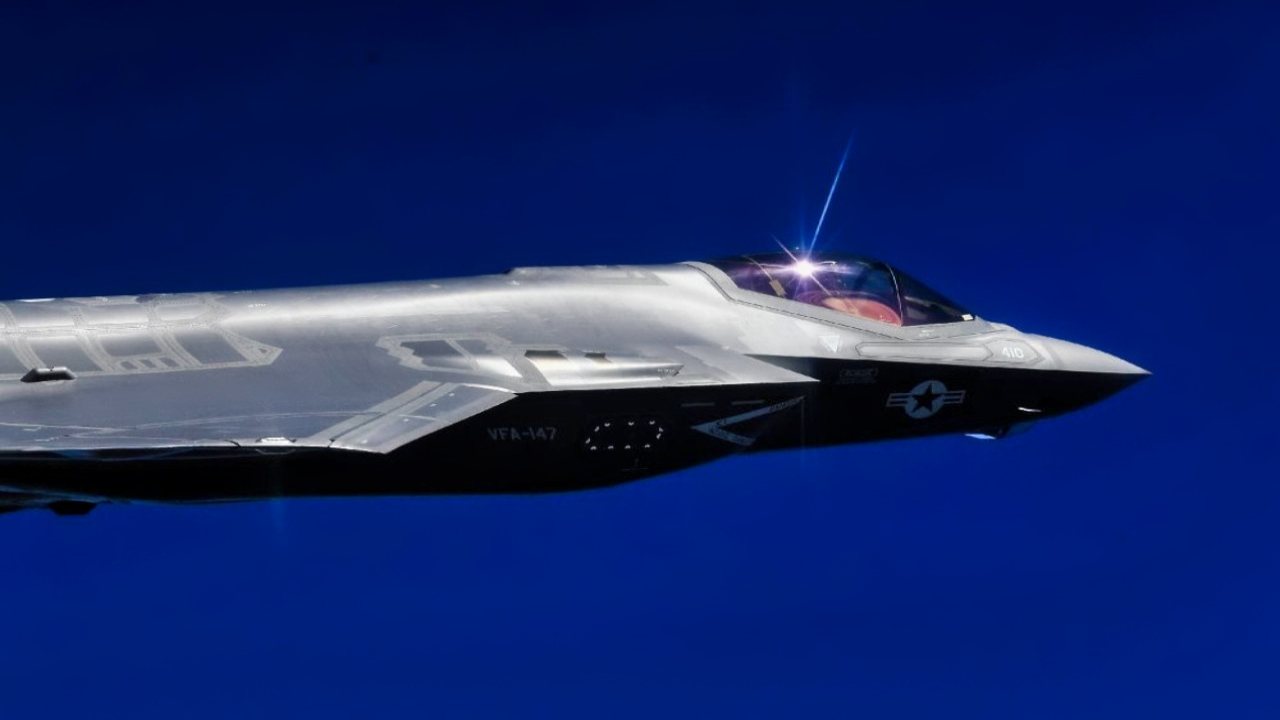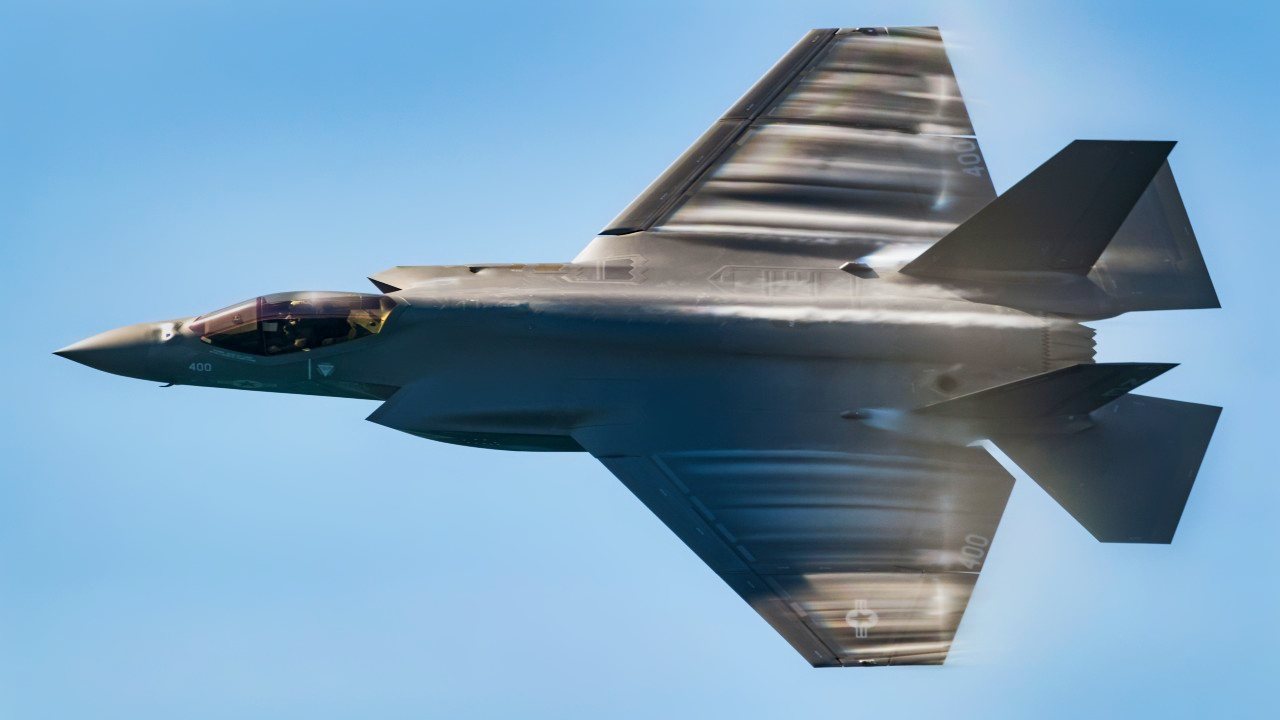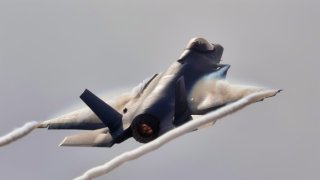F-35C: The U.S. Navy Has the Only Stealth Fighter Serving on an Aircraft Carrier
The Lockheed Martin F-35C remains the world's first and currently only long-range stealth strike fighter designed and built explicitly for U.S. Navy aircraft carrier operations.
F-35C – What Makes This Jet So Amazing?: Last month, the United States Navy's Nimitz-class aircraft carrier USS George Washington (CVN-73), and embarked Carrier Airwing (CVW) 7, completed carrier qualifications and cyclic flight operations with the Lockheed Martin F-35C Lightning II while underway in the Atlantic Ocean. Having previously focused on carrier qualifications, the nuclear-powered supercarrier transitioned to cyclic operations to simulate future operational missions.
That milestone, which was completed on December 13, marked the first time an aircraft carrier operating in the Atlantic Ocean conducted cyclic operations utilizing the fifth-generation stealth multirole fighter.
"Working to integrate with the 'Team Freedom' Airwing demonstrates that our warship continues to meet critical milestones in preparation for conducting global operations," said USS George Washington's Commanding Officer Capt. Brent C. Gaut. "I am exceptionally proud of our crew for making history during this underway period. Together, our 'GW' Team and family continue to highlight the U.S. Navy's profound operational capabilities, while also strengthening and empowering the future of naval aviation."
Over three days of cyclic flight operations, the crew of CVN-73 conducted 141 sorties, 67 day traps, and 17 night traps with brief pauses to allow for maintenance and fueling. While in the air, pilots completed various exercises, from close air support of troops on the ground and air-to-air maneuvers – and once the pilots successfully demonstrated tactical proficiency, they landed on the flight deck and prepared to launch again.
The Lightning II integrates advanced stealth technology into a highly agile, supersonic aircraft that provides the pilot with unprecedented situational awareness and unmatched lethality and survivability. While at sea, Team Freedom focused on integrating the aircraft with the ship's crew both on the flight deck and in the hangar bay.
The F-35C is currently operated by both the United States Navy and the United States Marine Corps.
F-35C: The Only Carrier-based Stealth Fighter
The Lockheed Martin F-35C remains the world's first and currently only long-range stealth strike fighter that was designed and built explicitly for U.S. Navy aircraft carrier operations.
As noted by Lockheed Martin, "Its configuration, embedded sensors, internal fuel and weapons capacity, aligned edges, and state of the art manufacturing processes all contribute to the F-35's unique Very Low Observable stealth performance. This enables pilots to evade enemy detection and operate in anti-access and contested environments, improving lethality and survivability."

The F-35C can operate as an intelligence, surveillance, and reconnaissance (ISR) asset and battle manager, and in addition share information with all networked ground, sea, and air assets in a battlespace. This capability can ensure that the U.S. Navy's men and women in uniform can execute their mission and come home safely. The CATOBAR (Catapult Assisted Take Off Barrier Arrested Recovery) variant is the first stealth bomber aircraft in the fleet of the U.S. Navy, and it was meant to eventually supersede the Boeing F/A-18B/C and A-6 Intruder, balancing the 480 F/A-18E/F aircraft now in service.
The U.S. Navy awarded a $39.3m contract to Lockheed Martin in April 2012 to overhaul the air system design and testing for F-35C fighter aircraft.

The F-35C carrier variant features several unique design modifications that include larger wings and tail control surfaces to meliorate low-speed control. In addition, the larger wing area can minimize the landing speeds while maximizing range and payload capacity. The naval variant was also designed to launch from the flight deck of a large aircraft carrier through a steam catapult, and it can be integrated with an Electromagnetic Aircraft Launch System (EMALS), while it can be recovered by using a tailhook arrestor.
Most of the features of the F-35 Joint Strike Fighter, including weapon loads, cockpit layout, countermeasures, and radars are retained in the F-35C variant. As with the F-35A model, the F-35C is also powered by a single Pratt & Whitney F135 turbofan engine rated at 125kN of dry thrust. The engine can generate 191.3kN of thrust afterburner.

The aircraft's Active Electronically Scanned Arrays (AESA) radar, Distributed Aperture System (DAS), Electro-Optical Targeting System (EOTS), and Helmet Mounted Display System allow the pilot to see everything in the battlespace with unprecedented situational awareness.
The F-35C can carry nearly 20,000 lbs of internal fuel, providing it with a range of greater than 1,200 nm – enabling aviators to fly further and remain in a desired battlespace longer before refueling is necessary. It can carry more than 5,000 lbs of internal weapons, or more than 18,000 lbs of combined internal and external weapons, which allows the Navy to operate in stealth when necessary, or increase lethality with additional weapons externally when the air space is permissive.
Peter Suciu: Author Experience and Expertise
Peter Suciu is a Michigan-based writer. He has contributed to more than four dozen magazines, newspapers, and websites with over 3,200 published pieces over a twenty-year career in journalism. He regularly writes about military hardware, firearms history, cybersecurity, politics, and international affairs. Peter is also a Contributing Writer for Forbes and Clearance Jobs.
All images are Shutterstock or Creative Commons.


